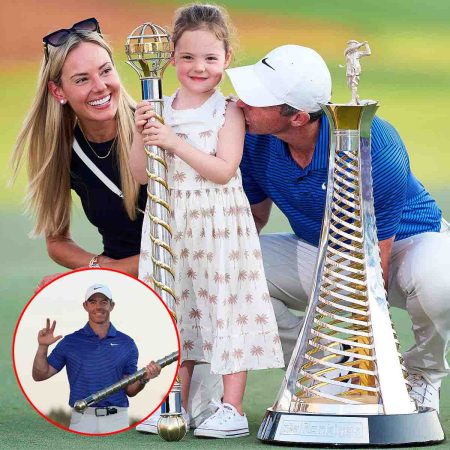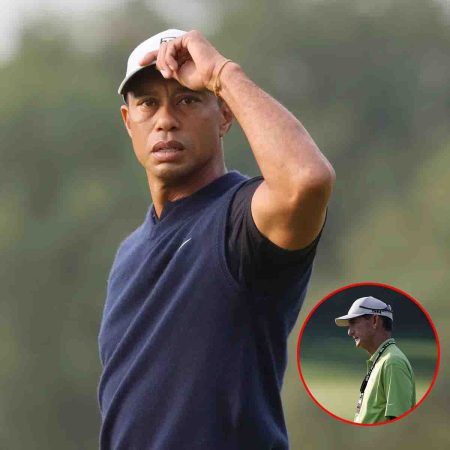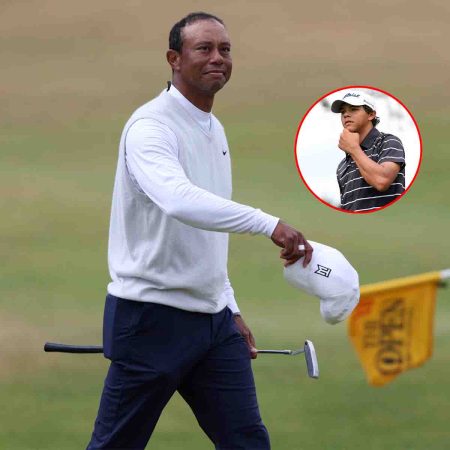GRAB YOUR COPY OF SLAM 222 FEATURING JA MORANT
Ja Morant isn’t used to being in the spotlight. It’s something that’s been a foreign language he’s getting accustomed to every day. It could be the fans asking for autographs and photos; reporters submitting interview requests for soundbites; or his social media buzzing as his follower count increases with each minute that passes by.
“It’s been tough,” he says, admitting the notoriety has been challenging. “I’m not used to being out there a lot. I’m used to just going to hoop where nobody knows me.”

He refers to the fame as “paparazzi-type stuff,” but knows this comes with the territory when you’re a household name. When asked if he remembers getting a glimpse of the spotlight, he’ll direct you to last November.
“Probably after the Alabama game,” he says. “I had almost 40 and a dunk that went viral. Social media just went crazy.”
Morant actually had 38 points. And the viral dunk he mentions came in the second half against the Crimson Tide in Tuscaloosa. He received an inbounds pass, dribbled in the open court en route to the rim, and took off from inside the paint for a tomahawk dunk as five white jerseys surrounded him. An aerial angle shows the defender closest to the rim crouching immediately after jumping to avoid getting put on a poster. The dunk was on loop from just about every major sports media outlet. Then, going viral became the norm.
In January, he obliterated Quintin Dove, a 6-8 forward from UT-Martin. Morant was on the wing, went backdoor as his defender overplayed the passing lane, took one dribble and gathered, as his 6-3, 175-pound frame soared over Dove outside the block, causing a ruckus throughout the arena. The play was No. 1 on SportsCenter. There was another tomahawk against Eastern Illinois a week later.
Soon after, the world knew more about Morant every time he stepped on the floor. He said Allen Iverson reached out, admiring his toughness. Kevin Durant called him his favorite college basketball player on a podcast and others followed suit.

Morant stuffed stat sheets on a nightly basis—24.5 ppg, 10.0 apg and 5.7 rpg while shooting close to 40 percent from behind the arc. He became the first player to average 20 and 10 in a season since the NCAA began to recognize assists in 1983-84. He also ranked in the top-10 in points, assists (331) and double-doubles (20).
His 40 points, 11 assists and 5 steals against SIU-Edwardsville made him the first Division I player with that stat line. Twenty-one of those 40 came from the charity stripe, establishing an Ohio Valley Conference single-season record to become the first player with 20-plus consecutive made free throws. He played an integral role in the Racers’ 28-5 overall record and earned OVC POY and tournament MVP honors. And to cap off his sophomore season, Morant was presented the prestigious Bob Cousy Award and had one of the best individual March Madness performances.
Scouts and draft analysts were infatuated over his athleticism and ambidexterity. A dual threat, his playing style was dissected to a T. He could score from all three levels and, in the open court, the way he attacked the rim drew comparisons to Russell Westbrook. The handle, which was a nightmare for opponents, was stellar and his playmaking—how he could orchestrate an offense and zip passes with his off-hand—was that of an elite NBA point guard.
“My favorite thing to do [is] just share the ball with my teammates,” he says. “I’m giving them easy looks to build their confidence. I feel like if they start off with high confidence and having fun, then we’re a way better team.”
Morant was proclaimed as a top-3 pick in mock drafts. He suddenly went from one of college basketball’s best-kept secrets to the most-talked about draft prospect not named Zion Williamson.
But all this recognition wasn’t there for him just a few years ago. Morant, who hails from Dalzell, SC, a town with a population of under 3,000, was an unranked player from a small town craving college interest on the hardwood.
He was once teammates with Williamson on the South Carolina Hornets, a local travel ball program, during high school. On a team that had a player with NBA-caliber potential, Morant was in the shadows looking to prove he belonged.

As time passed, he became skeptical. With peers receiving college interest, Morant questioned his athletic ability.
“I used to doubt myself a lot,” he says. “My mom and dad always preached to keep working. My mom told me I was beneath no one and my dad told me that I was trained to go. I used those words as fuel to my fire.”
Ja’s father Tee set the blueprint. Tee starred at Hillcrest HS in Sumter County (SC) and won a state championship alongside Ray Allen in the early ’90s. He then played at Claflin University, a Division II in Orangeburg, SC, followed by a stint overseas. When Tee’s primary focus was teaching Ja the game, he prioritized one thing: fundamentals.
There was no state-of-the-art facility, cameraman or purposeless props—only a basketball and a slab of concrete in the family’s backyard with the countryside humidity. Tee’s drills consisted of skill work and plyometrics for roughly two hours a day. After every drill, Ja jumped on tractor tires 25 times—eventually extending to 50 when it became easy.
“They was tough,” Ja says. “I know most people now fall in love with the fancy part of the game thinking they gotta have a trainer to get better, but my dad preached that I didn’t need any of those things.”
Before Ja was a teenager, Tee realized he was unlike other children in his age group. Ja’s feel for the game was clear against older competition.
“I noticed his IQ,” Tee says. “Having a basketball background, I knew what I had to do to make him effective on the court. I knew he was special around 11, 12.”

Another one of Tee’s plans was to build his son up mentally. Ja, who calls Tee his “biggest hater,” was always looking for validation after a good game. It never came. Instead, his father’s criticisms taught Ja to be resilient and never complacent with his game.
“I was the one saying, ‘You’re overrated,’ because I refused to give him the stamp of approval because he started to work hard,” Tee says. “I could tell he was looking for that, but I had to fight it off because he was playing very well.
“He was always looking for the perfect grade, and that was my way for continuing to motivate him. I always told him he ain’t do nothing ’til he reached his dream of playing under the big lights.”
“I’d say my 8th, 9th grade year is when I finally began to realize what he was actually doing—preparing me,” Ja says.
During the summer of his junior year, Morant attended Chandler Parsons’ basketball camp in Spartanburg, SC. A late addition, Morant’s name wasn’t on the camp roster, and he was placed in an auxiliary gym.
This is where Murray State head coach Matt McMahon first heard about Ja Morant. McMahon received a call from then-assistant coach James Kane about a player he stumbled across by accident.
Kane was scouting Tevin Brown, a small forward from Alabama, when he went to the concession stand and saw Morant, an incoming senior playing 3-on-3. Kane immediately called McMahon, urging him to make the trek to Spartanburg to see this camper, who, according to Kane, had all the pro intangibles.
“You could see it right away when we watched him play that summer—just his ability from an athleticism and explosive standpoint,” McMahon says. “We started to see his ability to find people on the court, his court vision and feel for the game.”

A scholarship offer followed after Morant scored 36 points against Brown’s team the following day. McMahon made it a priority to steer Morant to Murray State that summer. South Carolina’s Frank Martin was also interested in Morant, hoping he could sway him to stay home, but Morant had committed to the Racers on his official visit.
“It was just like home, and everybody’s family down there,” he says. “That was one of the reasons that I committed.”
If there’s one thing Tee knows about Ja, it’s that he’s never been one to duck smoke on the court, as was evident against Marquette in the opening round of the NCAA Tournament. It was Ja Morant versus Markus Howard, two of college basketball’s premier playmakers, taking center stage.
Ja ruled the entire game, leading the 12-seeded Racers to an 83-64 upset win and finishing with 17 points, 16 assists and 11 rebounds, becoming the eighth player in NCAA history to finish with a triple-double and first since Draymond Green in 2012. His full repertoire was on display no matter the defensive schemes the Golden Eagles threw at him.
He scored or assisted on 55 points—the most points created by a player in the past 10 NCAA tournaments—and his 16 dimes were second-most in the tournament since UNLV’s Mark Wade’s 18 in ’87.
“Ja is fearless when it comes to competition,” Tee says. “To come out of there with a triple-double and the victory wasn’t surprising to me.”
—
It’s a Monday afternoon and Ja has walked into a ballroom for his first-ever SLAM cover shoot at the Legacy Hotel on the campus of IMG Academy. He comes off coy until Lil Baby blares out the speakers. He begins to recite lyrics while posing for the photos you see on this page.
“Most of the top players get this, so for me to have this opportunity to be on it is an honor,” Ja says on making his first cover. “It’s a check off my bucket list.”

For the past two weeks, he’s been doing his pre-draft training at IMG. He also spent time in the gym with Allen as the soon-to-be-rookie prepares to begin his pro career. The most important piece of advice the HOFer has passed along beside shooting tips is maintaining a healthy diet to sustain the rigors of an 82-game season.
Ja says hearing NBA Commissioner Adam Silver call his name on draft night hasn’t hit him yet, but he’s definitely thought about it. When he does, he’ll be one of two players to be selected from South Carolina and first from a mid-major since Derrick Rose (Memphis) in 2008.
“I’m so proud of the kid,” Tee says, envisioning the moment, while watching Ja from afar. “He’s showing other kids that with maximum effort, you can reach your dream. It’d be evident when he goes across the stage, and I’d be the proudest father in the world.”
Whichever city Ja Morant ends up in, there’ll be a spotlight. So he better get used to it.








